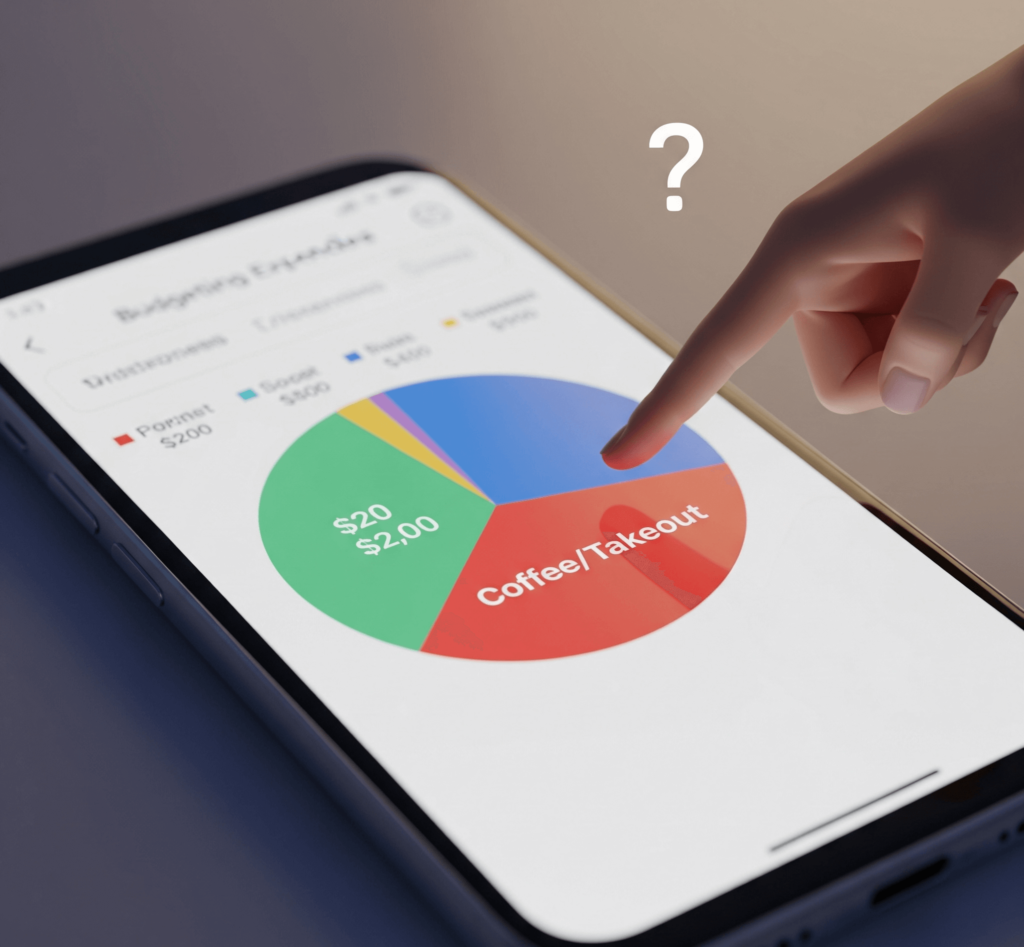Money is weird. It’s this thing that can cause so much stress, so much anxiety, and it’s a topic we’re all taught to be really, really quiet about Cost control. Like, you can talk to your friends about your love life or your crazy family, but the second you ask about their budget, everyone gets all weird and clammy.
For years, my relationship with money was basically a silent, stressful rollercoaster. I’d get my paycheck, and then, poof. A week later, I’d be staring at my bank account balance with a look of pure bewilderment, whispering, “Where… did it go?” It was like a ghost was living in my wallet, snatching dollars when I wasn’t looking. You ever feel like that? Like your money has a mind of its own and it just… leaves?
It all came to a head a few months ago when my car needed a repair that cost more than my entire savings account. I was totally lost. I couldn’t believe I was a whole adult and a surprise expense could wipe me out like that. That’s when I finally decided to get serious about cost control for beginners. Not because I wanted to be a financial guru, but because I was tired of the constant anxiety. And let me tell you, it was a messy, imperfect journey, but I actually figured some stuff out.
The ‘Where Did It Go?’ Mystery
My first step was a rude awakening. I was sitting on my couch one Saturday morning, a half-empty coffee mug in hand, and decided to look through my bank statements for the last month. But wasn’t even tracking; I was just… looking. I scrolled through all the transactions. A coffee shop run here, a takeout order there, a random subscription for a streaming service I don’t even remember signing up for.
It was a slow-motion car crash of tiny purchases Cost control.
$5.80 at the coffee shop. $12.50 for a burrito bowl. $1.99 for an app I used once. Another $5.80 at the coffee shop. $18 for a movie rental.
And that was just in one week! I totaled it up, and my jaw dropped. All those little things added up to a serious chunk of change. I felt like a financial crime scene investigator, and the perp was… me. The ghost in my wallet was just my own bad habits.
Step 1: The Great Money Detective Mission For Cost control
So, I started with the most basic, boring step: tracking expenses. I didn’t use a fancy app at first. I just opened a note on my phone and wrote down every single dollar I spent for a week. Every coffee, every snack, every random Target run where I went in for one thing and came out with twenty.
It was brutal. It was like holding a mirror up to my spending habits, and I did not like what I saw. I had to face the fact that I was spending way too much on food delivery. I mean, my apartment is a few blocks from a grocery store. Why was I paying someone $5 to bring me a sandwich? The laziness tax was real, and it was costing me a fortune.
My advice? Don’t try to be perfect. Just track for a week. It doesn’t have to be a whole thing. You don’t need a spreadsheet with formulas and charts. Just a list. The data will speak for itself, and it might just give you the kick in the pants you need to start saving money tips in a way that actually works.

Simple Savings Strategies That Actually Work
Once I knew where my money was going, it was time to redirect it. I started with some super-simple strategies. These aren’t revolutionary; they’re just… practical.
The “30-Day Rule”
This is a game-changer for impulse shopping. If I see something I want—a new gadget, a jacket, a random piece of furniture from a store—I don’t buy it. I put it on a list in my phone and I wait 30 days. If I still want it after a month, I’ll consider it.
You know what happens 99% of the time? I completely forget about it. That intense feeling of “I NEED THIS NOW” just… disappears. I’ve saved hundreds of dollars with this simple trick.
The “Subscription Audit”
Oh my god, this one was painful. I went through my credit card statements and found that I was paying for, like, six different streaming services, a meal-kit service I forgot to cancel, a couple of gaming subscriptions, and a meditation app I used twice. It was over a hundred dollars a month! I felt like a total chump. I canceled them all except for the two I actually used. It felt so good.
The “Coffee Shop Challenge”
I love a good latte. Seriously, I do. It’s my little treat. But I was spending about $150 a month on coffee. That’s not a treat; that’s a small car payment. So I started making coffee at home. Did I quit completely? Heck no. But I cut it down to maybe once or twice a week. That’s a huge win and a key cost control for beginners move.
These simple savings strategies are about small changes, not giant leaps. You don’t have to go from zero to minimalist overnight.
Budgeting, but Like, Chill About It
Okay, now for the B-word: budgeting. The word itself makes me tense up. But I found a way to do it that isn’t a total drag. I follow a modified version of the 50/30/20 rule.
- 50% for Needs: This is your rent/mortgage, utilities, groceries, transportation—all the stuff you absolutely need to survive.
- 30% for Wants: This is your fun money—eating out, movies, clothes, hobbies. It’s what makes life fun.
- 20% for Savings and Debt: This is the money you put away for the future or use to pay off debt.
I don’t track every single penny in my “wants” category. Once the money is in that bucket, I can spend it without guilt. It’s liberating! It’s what makes budgeting for beginners feel doable. I’ve even started calling my wants money “my fun money.” It’s a total psychological trick, but it works.

Cost control Without Crying
You don’t have to give up everything you love to save money for Cost control. You just have to be smart about it.
The Great Cable Cut
Years ago, my friend looked at me and said, “You seriously still have cable??” I did. It was so expensive, and I barely watched it. I finally cut the cord, and it was one of the best decisions I ever made. Now, I just pay for a few streaming services, and I watch what I want, when I want.
Grocery Store Ninjitsu
Grocery shopping used to be my biggest budget killer. I’d go in without a list and just… buy whatever looked good. Now, I meal-plan for the week, I use a list, and I stick to it. I also started buying more store-brand items. You can save so much money on things like rice, pasta, and canned goods without sacrificing quality. It’s little tricks like this that make cutting costs manageable.
The Mindset Shift: Saving Smarter, Not Harder
This whole journey of Cost control wasn’t just about saving money; it was about gaining control. It’s about being intentional with your spending. It’s about knowing where your money is going and deciding if that’s where you want it to go. I used to think I was too lazy to save money, but the truth is, I was just saving wrong.
I used to think of saving as a punishment. Now, I see it as a tool. A tool that helps me feel less stressed. A tool that will help me afford that new car in a few years without having a meltdown. It’s not about being cheap; it’s about being smart.
So, if you’re a beginner on this journey, don’t try to be perfect. Just try to be a little better than you were yesterday. Start by tracking your expenses. See where the money is going. Then, find a few simple savings strategies that work for you. It’s a marathon, not a sprint. And trust me, the feeling of control is worth it.
Now, if you’ll excuse me, I’m going to go enjoy a perfectly good cup of coffee that I made myself. And I didn’t even have to leave the house.
Outbound Link Suggestion:
- [A link to a blog post from a cool personal finance influencer who writes in a similar relatable style.]
- [A link to a guide on the 50/30/20 budget from a reputable but easy-to-read source like NerdWallet or The Balance.]





